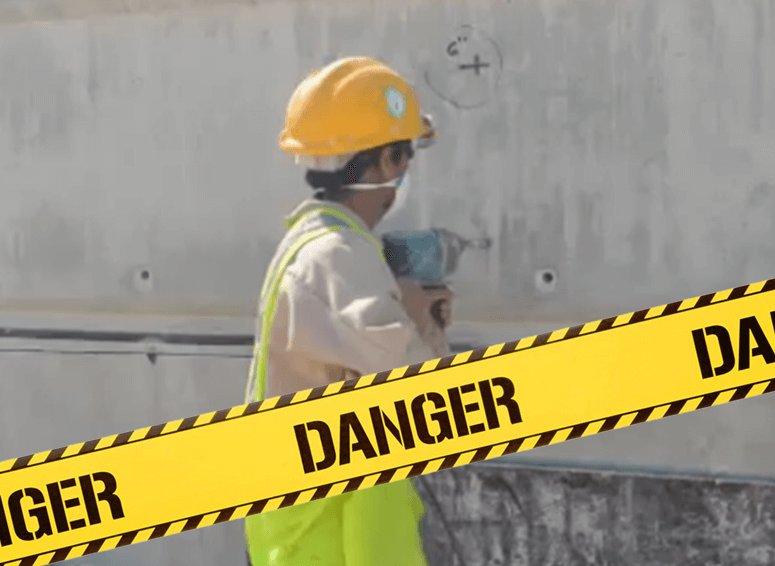
Table of Contents
Asbestos Management Surveys vs Asbestos Refurbishment / Demolition Surveys – What’s The Difference?
Confusion can often surround what actually happens during asbestos surveys. Householders, and business owners on tight deadlines and limited budgets, will sure to be primarily focused over the time it will take, and any potential and costly damage that may be caused. It’s also likely they have heard the word “intrusive” associated with asbestos surveys and are not fully aware of the difference between an Asbestos Management Survey and an Asbestos Refurbishment / Demolition Survey.
Too often we hear of business proprietors who appear to completely ignore all regulations and advice on the potential presence, and the risk of asbestos exposure. One Essex business owner was recently prosecuted by the Health & Safety Executive (HSE) for breaching Control of Asbestos Regulations 2012 and fined £9,293 for failing to carry out a management asbestos survey, and a refurbishment and demolition asbestos survey, prior to work proceeding. As is frequently reported in these cases, asbestos insulation board (AIB) was simply removed and broken up by contractors without any control measures, safety precautions or personal protection in place.
So, what is the difference between an Asbestos Management Survey and an Asbestos Refurbishment / Demolition Survey?
Asbestos Surveys to locate, identify type, extent and condition
Both types of surveys are designed to locate and identify the type, extent and condition of any ACMs within a pre-2000 building. Importantly, they are also intended to outline any remedial action needed to be carried out such as:
- Complete asbestos removal, or
- Securing ACMs in place under a detailed asbestos management plan.
Asbestos Management Surveys – are standard inspections which cover all accessible parts of a commercial and industrial property, and can be undertaken during normal maintenance and repair work. All commercial and industrial property built prior to 2000, regardless of size, are required to undergo an Asbestos Management Survey, under Regulation 4 “Duty to Manage” (Control of Asbestos Regulations 2012, CAR 2012). It’s important to stress that this type of survey is non-intrusive. However, samples of any suspect materials will be collected and sent for laboratory analysis to confirm the presence of asbestos and fibre type.
Asbestos Refurbishment / Demolition Surveys – apply to properties before proceeding with any structural renovation, demolition or fit-out work and which may involve a combination of an Asbestos Refurbishment / Demolition and Asbestos Management Survey. As with Asbestos Management Surveys, compliance affects all commercial and industrial property built prior to 2000, regardless of size, under the Control of Asbestos Regulations 2012, the Health & Safety Executive Survey Guide – HSG264, and CDM (Construction Design and Management) Regulations, 2015.
However, proprietors and duty holders should be aware, and fully understand, that this type of survey is classified as highly intrusive and normally should only be carried out when a property is vacant. The fabric of the building will be disturbed and damage incurred as a result of robust inspection to gain access behind cladding, often including:
- Holes drilled into walls ceilings or floors
- A wall completely removed
- Wall heaters removed
- Toilet cisterns removed
Why asbestos experienced surveys are a requirement
Property owners need to know that there is a very good reason why there is a legal requirement for an asbestos experienced survey to be completed before any renovation work is carried out on a property built up to 2000, at least. UK importation and use of white asbestos was only finally banned in November 1999.
For most of the second half of the 20th century, products made from asbestos, such as AIB, floor and ceiling tiles, soffits, pipes and roofing sheets were used as a source of low cost insulation throughout the building and construction industry. Successive governments, HSE and official trade bodies consistently warn of the potential exposure risk of asbestos materials still present in an estimated 1.5 million properties across the UK.